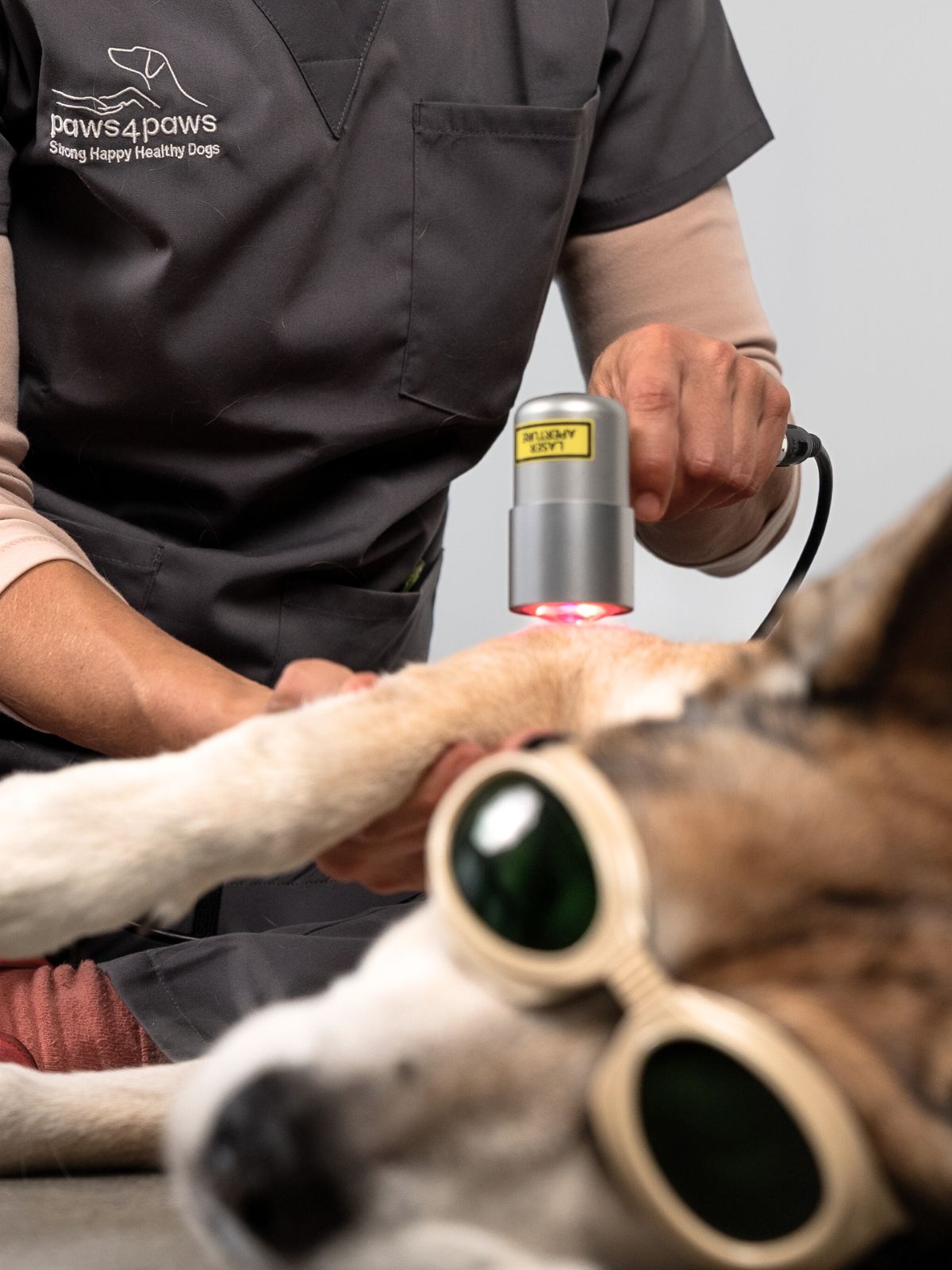Fibrocartilaginous Embolism (FCE) in Dogs
In-Home Rehabilitation for to Support Neurological Recovery, Restore Mobility, and Improve Functional Independence
Understanding Fibrocartilaginous Embolism (FCE) in Dogs
Fibrocartilaginous embolism (FCE) in dogs is a non-painful, acute spinal cord injury caused by the sudden blockage of a spinal blood vessel by fibrocartilaginous material—believed to originate from the intervertebral disc. This vascular event leads to a localized area of spinal cord infarction, resulting in variable neurological deficits depending on the location and extent of the embolism.
FCE typically affects young to middle-aged, large-breed dogs, although it can occur in dogs of any size. Clinical signs often develop suddenly during activity and may include unilateral or asymmetric limb weakness, ataxia, or complete paralysis. Pain is not typically present, which helps differentiate FCE from conditions like intervertebral disc disease (IVDD). Most dogs remain mentally alert and may attempt to move despite significant motor impairment.
Diagnosis is made based on clinical history, neurological examination, and imaging—often by excluding other causes of spinal cord injury. There is no surgical treatment for FCE; instead, structured rehabilitation is the cornerstone of recovery, focusing on restoring voluntary motor function, coordination, and independent mobility.

Why Rehabilitation Matters
Rehabilitation is the primary form of treatment for dogs recovering from fibrocartilaginous embolism, as there is no surgical intervention available for this condition. Following the vascular event, dogs often experience varying degrees of paresis, proprioceptive loss, and impaired coordination—typically with asymmetric distribution. Without structured therapeutic input, these deficits can persist, leading to muscle atrophy, joint stiffness, abnormal weight distribution, and long-term functional limitations.
Early, targeted rehabilitation plays a critical role in supporting neural plasticity, retraining coordinated movement, and promoting weight-bearing in the affected limbs. Therapy aims to stimulate neuroregeneration through guided activity, proprioceptive input, and neuromuscular re-education. Functional mobility is restored progressively, beginning with assisted postural transitions and weight-shifting exercises and advancing to more complex ambulatory tasks.
Rehabilitation also addresses secondary complications such as pressure sores, disuse contractures, and compensatory strain on the unaffected limbs and spine. It provides an essential framework for recovery, helping dogs rebuild strength, improve balance, and regain confidence in movement.
For many dogs, especially those who receive early intervention, structured rehabilitation significantly improves the chances of returning to independent ambulation and functional quality of life.
Rehabilitation for Fibrocartilaginous Embolism in Dogs
Rehabilitation for fibrocartilaginous embolism in dogs is focused on supporting neurological recovery, improving postural control, and restoring safe, functional mobility. Since FCE affects the spinal cord but not peripheral nerves, the potential for motor recovery is often good—particularly when rehab therapy is initiated early and delivered consistently. Treatment is tailored based on the dog’s neurological status, asymmetry of deficits, and current level of function.
All therapy is delivered in the home environment, where dogs are most comfortable and can safely practise movement in familiar spaces. This allows for accurate assessment of mobility in real-life conditions and ensures exercises are context-specific and easy to implement.
Therapeutic interventions may include:
-
Manual therapy to manage soft tissue tightness, improve circulation, prevent contractures, and address asymmetrical postural patterns
-
Neuromuscular re-education to retrain coordinated limb movement, encourage voluntary motor control, and support neuroplasticity
-
Weight-shifting and gait training to promote limb loading, improve balance, and support return to functional ambulation
-
Proprioceptive stimulation to enhance limb awareness and trunk stability
-
Laser therapy (PBMT) to support neural regeneration and reduce inflammation
-
Home exercise programs to facilitate neuromuscular reconditioning, support progress between sessions, and reinforce clinical goals
-
Owner guidance on safe handling, environmental adaptation, and long-term support strategies
This structured, multimodal approach facilitates functional improvement and independence, while reducing the risk of secondary complications. With appropriate support, many dogs recover the ability to walk and regain a high quality of life following FCE.

